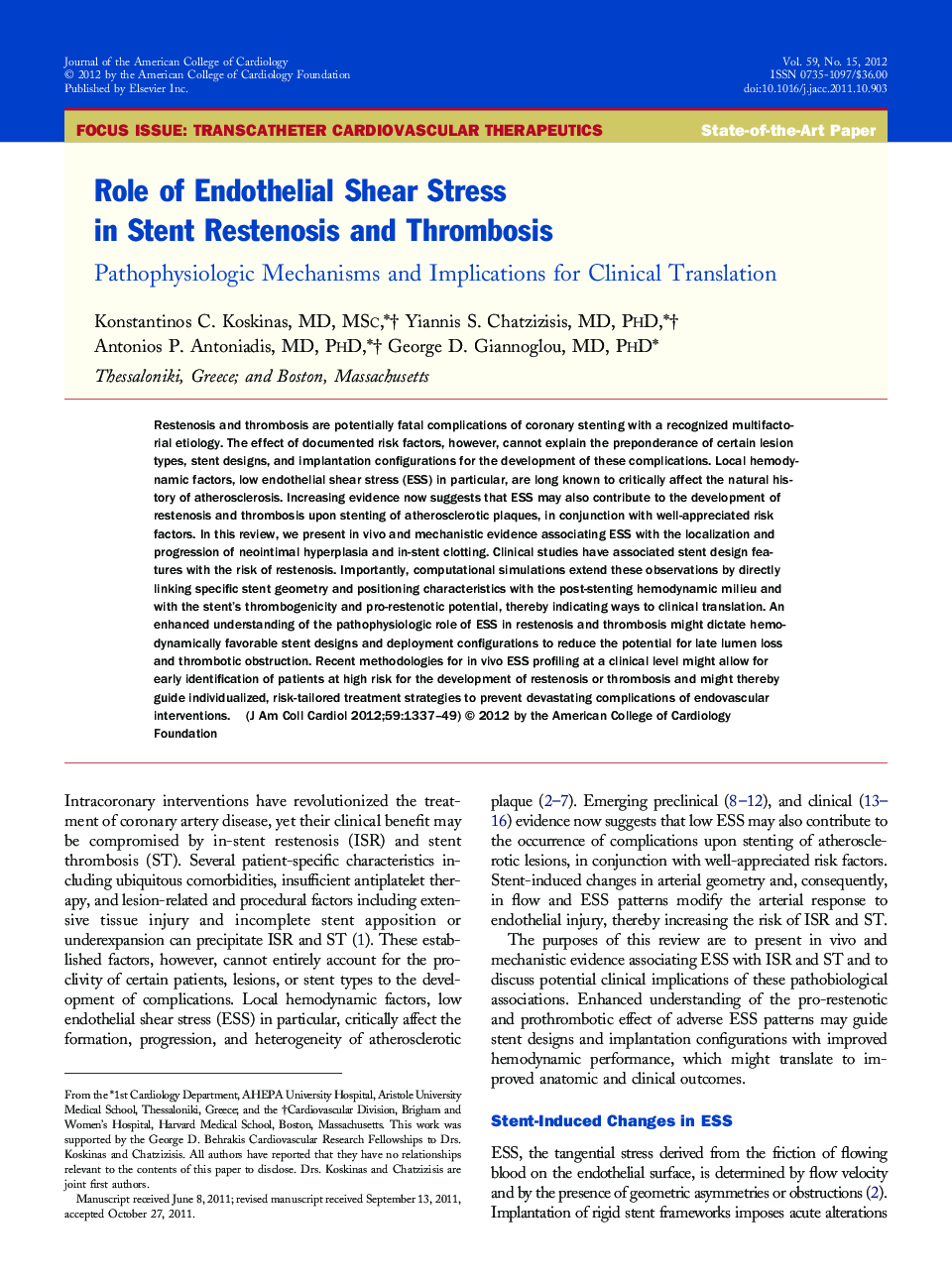| کد مقاله | کد نشریه | سال انتشار | مقاله انگلیسی | نسخه تمام متن |
|---|---|---|---|---|
| 5983378 | 1577216 | 2012 | 13 صفحه PDF | دانلود رایگان |

Restenosis and thrombosis are potentially fatal complications of coronary stenting with a recognized multifactorial etiology. The effect of documented risk factors, however, cannot explain the preponderance of certain lesion types, stent designs, and implantation configurations for the development of these complications. Local hemodynamic factors, low endothelial shear stress (ESS) in particular, are long known to critically affect the natural history of atherosclerosis. Increasing evidence now suggests that ESS may also contribute to the development of restenosis and thrombosis upon stenting of atherosclerotic plaques, in conjunction with well-appreciated risk factors. In this review, we present in vivo and mechanistic evidence associating ESS with the localization and progression of neointimal hyperplasia and in-stent clotting. Clinical studies have associated stent design features with the risk of restenosis. Importantly, computational simulations extend these observations by directly linking specific stent geometry and positioning characteristics with the post-stenting hemodynamic milieu and with the stent's thrombogenicity and pro-restenotic potential, thereby indicating ways to clinical translation. An enhanced understanding of the pathophysiologic role of ESS in restenosis and thrombosis might dictate hemodynamically favorable stent designs and deployment configurations to reduce the potential for late lumen loss and thrombotic obstruction. Recent methodologies for in vivo ESS profiling at a clinical level might allow for early identification of patients at high risk for the development of restenosis or thrombosis and might thereby guide individualized, risk-tailored treatment strategies to prevent devastating complications of endovascular interventions.
Journal: Journal of the American College of Cardiology - Volume 59, Issue 15, 10 April 2012, Pages 1337-1349